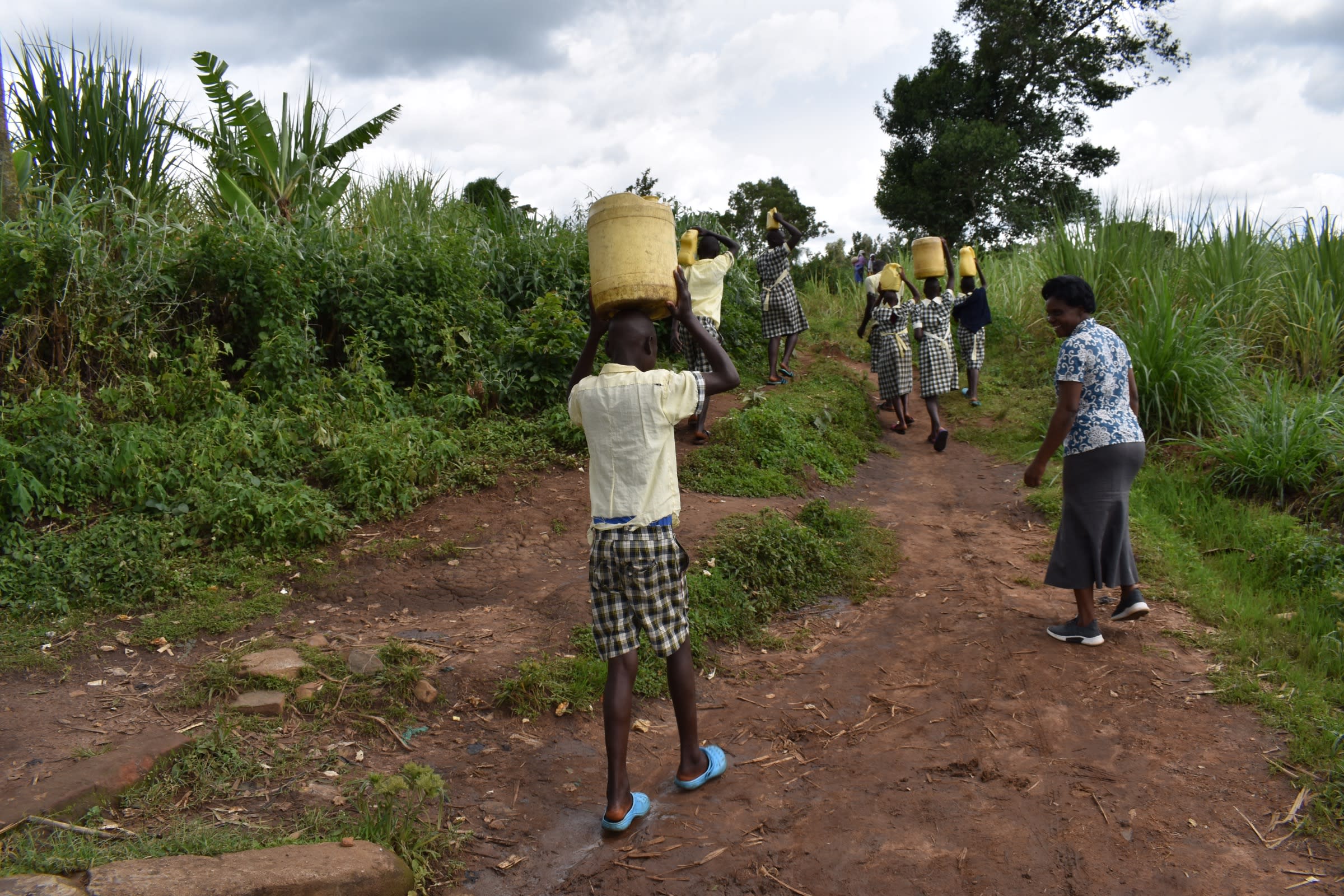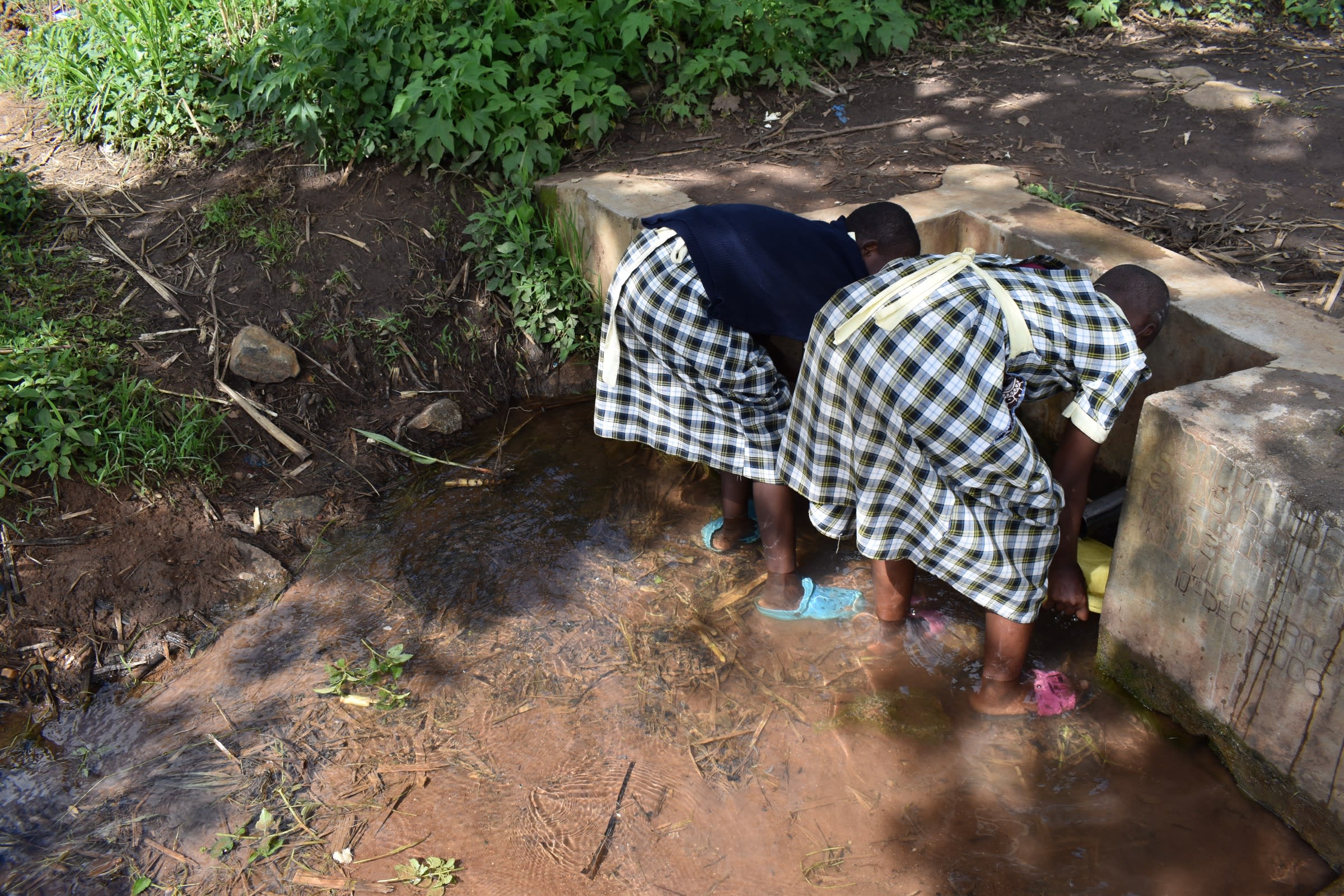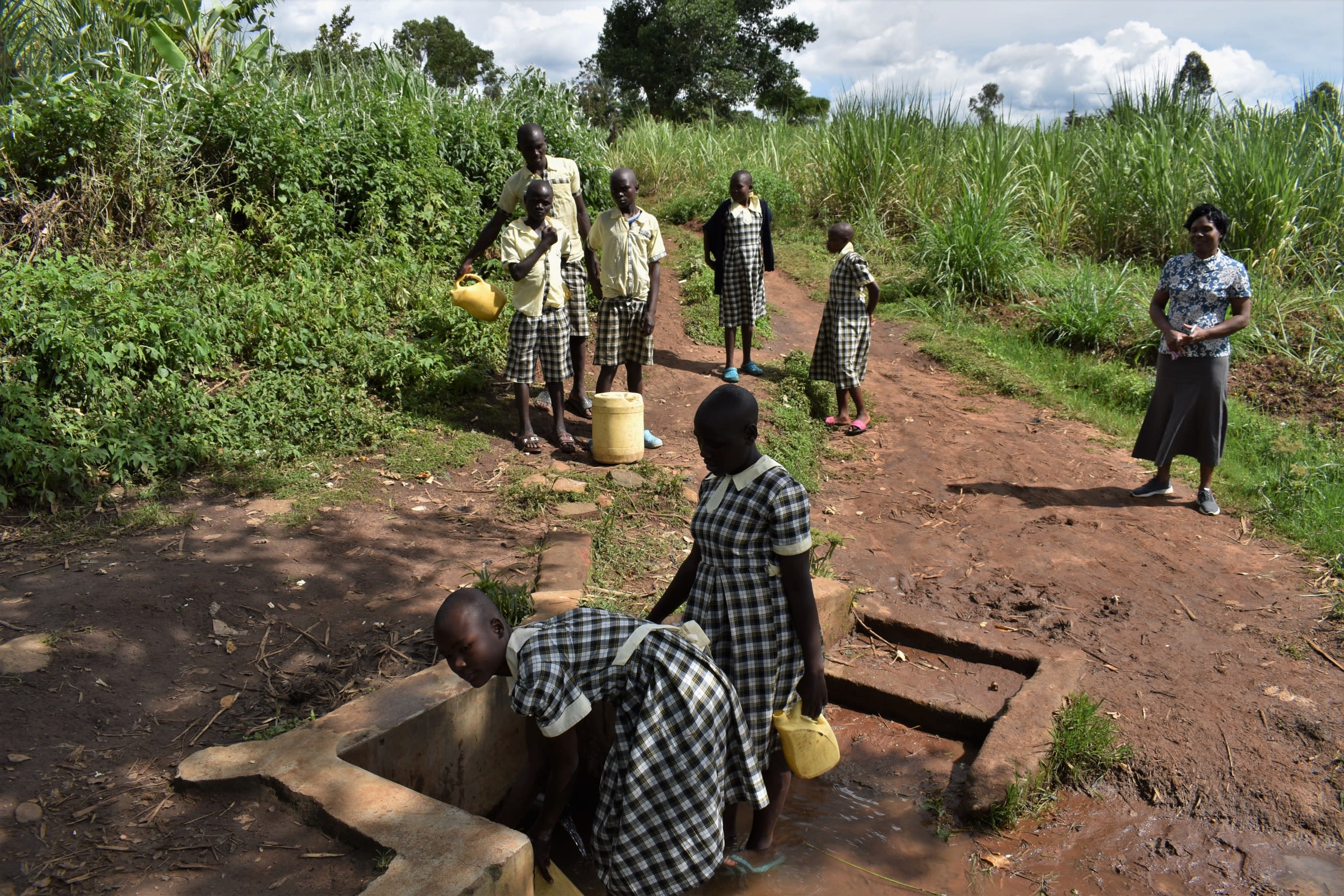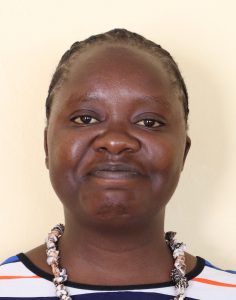The 963 students at Ikoli Primary School say that their chests ache from having to carry 40 lb. (18.14 kg) jerrycans for such a long and grueling distance every day.
The road to get to the once-protected spring is long, twisting, hilly, and often rife with reckless motorcycle taxi drivers. A teacher must accompany them to the water point for security purposes, especially for the girls. And when students must fetch water multiple times a day, the trip becomes daunting.

"I have to go to bring water to be used at school at least twice a day, sometimes even more times than that," said Valencia I., 12. "I'm required to carry a 20-liter jerrycan for this. At the end of the day, I end up taking painkillers to relieve the aches in my body that come from the carrying of the heavy water."
While at the spring, students sometimes must queue behind community members. Fights break out because no one wants to wait, and students lose these more often than not. The area around the water point is flooded, which is unsafe when children have to step in the stagnant water to fill their containers. Sometimes, students disappear at the water point rather than trekking the long way back to school.

"As a teacher, I have been a victim of having my lessons interrupted so that the learners can go and fetch water for various uses within the school," said Madam Laura, 47 (pictured below at the spring, waiting for students to fill their jerrycans).

"This has, in turn, ended up affecting both me and the learners, especially at the end of the year when they have to compete with other learners," Laura continued. "They end up posting very dismal results."
The effects on the students' mental health and academic performance would be cause enough for them to receive a water source of their own. However, since the spring was protected in 2006, it has fallen into disrepair; the catchment area has been compromised. This has led to rampant health issues in the school, including typhoid, amoeba, and bilharzia, among others. These infections are augmented by the poor hygiene at the school due to water scarcity. The school doesn't have the water to spare for regular cleaning of classrooms and latrines, especially when students dread fetching water as much as they do.
With two rainwater catchment tanks on school grounds, students' mental and physical health will improve. They will be in class longer and will be able to focus on learning in a cleaner, safer environment.
What We Can Do:
Rain Tanks
Two 75,000-liter rainwater catchment tanks will help alleviate the water crisis at this school. The school will help collect the needed construction materials such as sand, bricks, rocks, and water for mixing cement. We will complement their materials by providing an expert team of artisans, tools, hardware, and the guttering system. Once finished, these tanks will begin catching rainfall that will be used by the school’s students and staff for drinking, handwashing, cooking, cleaning, and much more.
We and the school strongly believe that all of these components will work together to improve standards at this school, which will lead to better student academic performance and help to unlock the potential for these students to live better, healthier lives.
Handwashing Stations
The student health club will oversee the two new handwashing stations we will provide, and make sure they are kept clean and in working condition. The club leaders will fill the handwashing stations with water daily and make sure they are always supplied with a cleaning agent such as soap or ash.
VIP Latrines
Two triple-door latrine blocks will be constructed with local materials that the school will help gather—one block for girls and one for boys. All of these new latrines will have cement floors that are designed to be easy to use and clean. And with two rain tanks right on school property, there should be enough water to keep them clean.
Training on Health, Hygiene, COVID-19, and More
We will hold a one-day intensive training session with students and teachers. This training will cover a wide range of topics including: COVID-19 symptoms, transmission routes, and prevention; personal and environmental hygiene; and the operation and maintenance of the rain tanks, latrines, and handwashing stations. There will be a special emphasis on handwashing.
Our team of facilitators will use a variety of methods to train, including participatory hygiene and sanitation transformation, and asset-based community development. We will initiate a student health club, which will prepare students to lead other pupils into healthy habits at school and at home. We will also lead lectures, group discussions, and provide illustrative handouts to teach health topics and ways to promote good hygiene practices within the school, like handwashing and water treatment. We will then conduct a series of follow-up trainings before transitioning to our regularly scheduled support visits throughout the year.

 Rainwater Catchment
Rainwater Catchment
 Rehabilitation Project
Rehabilitation Project










































